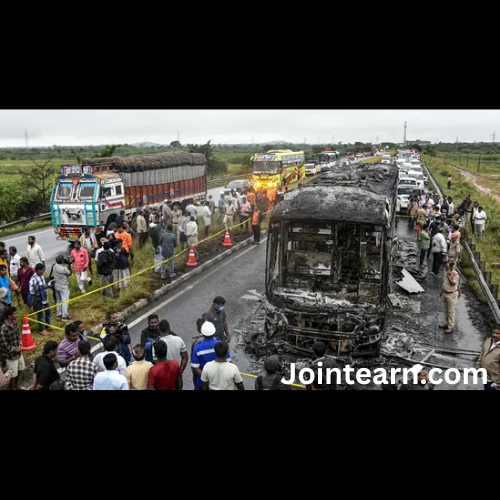As the festival of lights approaches, Delhi is preparing to celebrate Diwali in a manner that aims to balance tradition with environmental responsibility. This year, authorities and the Supreme Court have permitted the sale and use of CSIR-NEERI-certified green crackers in the Delhi-NCR region from October 18 to 20. These measures come at a time when the city is already grappling with deteriorating air quality, with meteorological conditions expected to exacerbate pollution levels.
The Supreme Court has outlined specific guidelines for the sale and use of green crackers, allowing them to be burst only during two designated time slots—between 6 am and 7 am in the morning and 8 pm to 10 pm in the evening. These restrictions aim to minimize the adverse impact on air quality while still permitting residents to partake in the festival’s traditional activities. Green crackers, developed with reduced emissions in mind, are being promoted as a cleaner alternative to conventional fireworks, though experts caution that even these are not entirely free from environmental and health concerns.
The State of Air Quality in Delhi
The timing of this Diwali coincides with a particularly severe air pollution episode in the national capital. According to the latest data from the Central Pollution Control Board (CPCB), Delhi’s Air Quality Index (AQI) reached 296, nearing the threshold of the “very poor” category. This marks the sixth consecutive day of poor air quality, following readings of 268 on Saturday and 254 and 245 on the preceding two days.
The situation is even more critical in other parts of the National Capital Region (NCR). Ghaziabad, in neighboring Uttar Pradesh, has consistently recorded AQI levels in the “very poor” category for three consecutive days, with a 24-hour average of 324 on Saturday, 306 on Friday, and 307 on Thursday. Noida and Faridabad have also faced challenges, with Noida reporting “very poor” air quality and Faridabad registering “moderate” levels. Gurugram and Greater Noida have been slightly better but remain in the “poor” category with AQIs of 258 and 248, respectively.
Experts warn that the combination of existing high pollution levels, worsening meteorological conditions, and the potential increase in firecracker activity during Diwali could have serious health consequences. According to Dr. S. Chatterjee, Senior Consultant in Internal Medicine at Apollo Hospital, while green crackers produce about 30% less pollution than traditional firecrackers, they still release particulate matter and other pollutants that can exacerbate respiratory conditions. Individuals with asthma, bronchitis, or other pulmonary conditions, as well as the elderly and children, are particularly vulnerable.
The Role of Green Crackers
Green crackers are designed to reduce air pollution and noise while retaining the celebratory spirit of Diwali. The technology behind these crackers involves modifications in the chemical composition to lower the emission of harmful gases such as sulfur dioxide, nitrogen oxides, and particulate matter. Despite these improvements, health experts emphasize that green crackers are not entirely harmless.
Dr. Chatterjee advises caution, stating that even reduced-emission crackers can lead to a spike in respiratory complaints if used extensively during periods of already elevated pollution levels. He suggests that the safest approach would be to celebrate Diwali without crackers altogether, highlighting that festivals can be observed in ways that do not compromise public health.
Survey Findings and Potential Impact
A recent survey conducted by LocalCircles, involving over 38,000 respondents across Delhi, Gurugram, Noida, Faridabad, and Ghaziabad, sheds light on public behavior regarding firecracker use. The study found that approximately 34% of families are likely to burst crackers this Diwali, with half of them planning to use traditional fireworks alongside green crackers.
The survey indicates that the Supreme Court’s order permitting green crackers may inadvertently lead to a 40% increase in firecracker use compared to last year. This raises concerns that regular, high-emission fireworks could make a comeback despite ongoing efforts to reduce pollution. Experts argue that while the intent behind green crackers is positive, enforcement and public compliance are critical to achieving any meaningful reduction in environmental impact.
Enforcement Measures by Authorities
To ensure adherence to the Supreme Court’s guidelines, authorities have deployed a comprehensive monitoring and enforcement strategy. Patrolling teams from multiple agencies, including the Delhi Police, have been instructed to remain vigilant throughout the permitted days and times. These teams are tasked with ensuring that only NEERI and PESO-approved green firecrackers, identifiable by QR codes, are used by residents.
Police stations across the city have been directed to increase surveillance, particularly in neighborhoods with a history of violations during Diwali. Additional beat staff and enforcement teams have been deployed in residential areas, marketplaces, and public spaces to monitor activities, prevent illegal firecracker sales, and take immediate action against violators. The authorities have made it clear that strict penalties will be imposed on those found using non-certified firecrackers or bursting them outside the allowed time slots.
Public awareness campaigns have also been intensified to educate residents about the importance of using green crackers responsibly. Social media campaigns, community outreach programs, and collaborations with local Resident Welfare Associations aim to encourage compliance and reduce potential harm to vulnerable populations. Authorities emphasize that while green crackers are a step forward, responsible usage and consideration for health and environmental factors remain paramount.
Balancing Tradition and Health
The debate over firecracker use during Diwali reflects a broader tension between cultural traditions and public health priorities. Diwali, celebrated across India as the festival of lights, is marked by family gatherings, rituals, and the bursting of firecrackers. For many, fireworks are an integral part of the festivities, symbolizing joy and the triumph of light over darkness.
However, in Delhi, the challenge lies in reconciling this cultural practice with the realities of urban pollution and its consequences. Severe air quality, especially during the winter months, can exacerbate chronic health conditions, increase hospital admissions for respiratory ailments, and place an additional burden on the healthcare system. The Supreme Court’s decision to permit green crackers is an attempt to strike a balance—allowing citizens to celebrate while mitigating environmental and health risks.
Despite these measures, experts continue to stress the importance of minimizing firecracker use altogether. Simple alternatives, such as lighting lamps, candles, or eco-friendly LED decorations, can preserve the festive spirit while safeguarding health. Public cooperation is essential, as even reduced-emission green crackers can contribute to pollution if used extensively or alongside traditional fireworks.
Looking Ahead
As Delhi prepares to celebrate Diwali, the city’s residents face a challenging decision: how to observe the festival safely amid already poor air quality. While green crackers offer a partial solution, the underlying environmental concerns persist. Policymakers, law enforcement agencies, healthcare professionals, and community leaders are all urging residents to consider the broader impact of their celebrations.
This year’s Diwali in Delhi underscores the urgent need for long-term strategies to combat air pollution, particularly during festivals and periods of high emissions. It highlights the importance of environmental awareness, responsible behavior, and government-led interventions to protect public health without entirely suppressing cultural practices.
In conclusion, the Supreme Court’s directive on green crackers provides a structured framework for celebrating Diwali responsibly in Delhi-NCR. The measures, combined with vigilant enforcement and public awareness, aim to reduce pollution while allowing the city to enjoy its traditional festival. Yet, the broader message remains clear: the health of citizens and the environment must remain a priority, and even during moments of celebration, caution and responsibility are essential. The green cracker Diwali represents a step forward, but the ultimate success of this initiative will depend on public compliance and collective commitment to preserving air quality in one of India’s most densely populated cities.


Leave a Reply